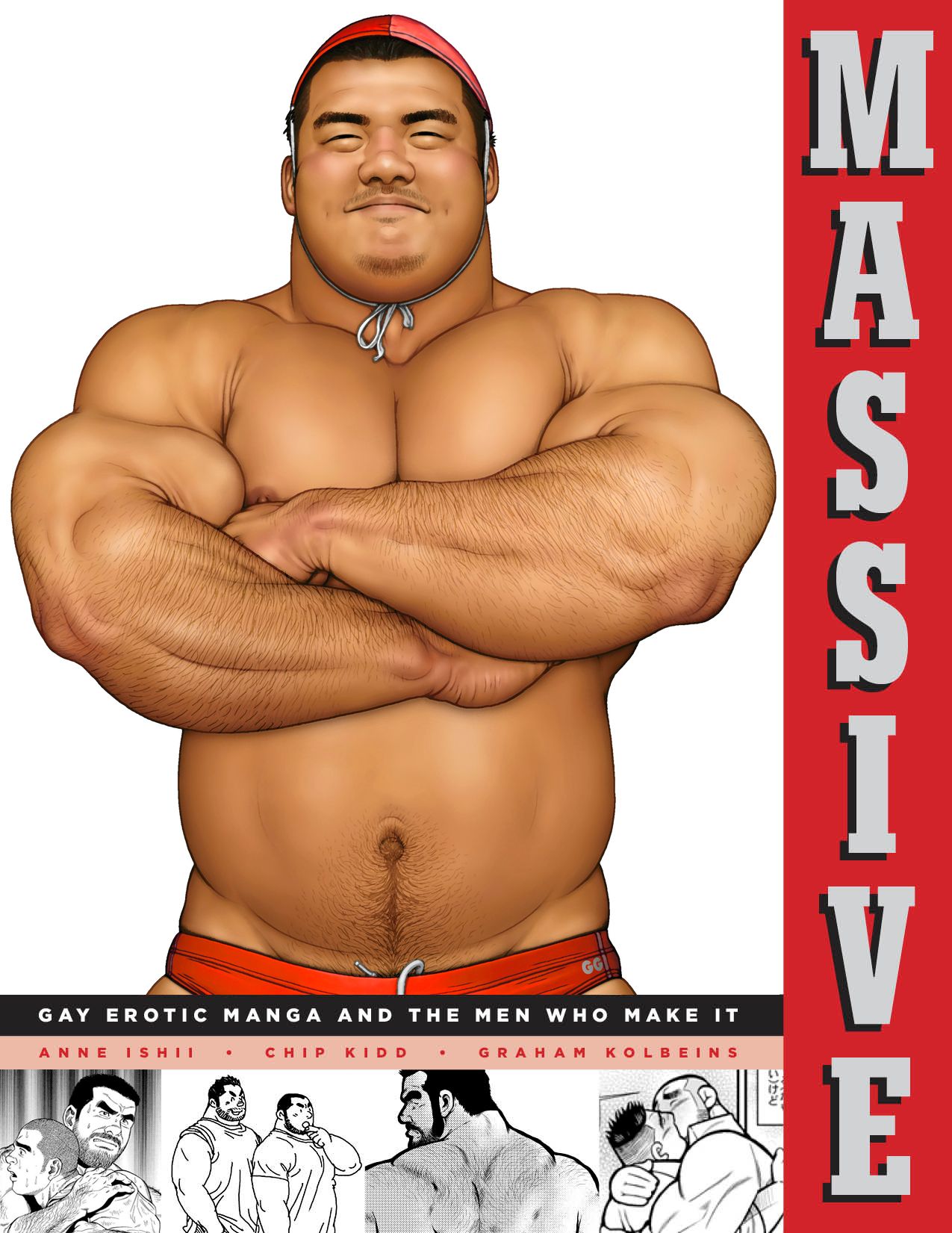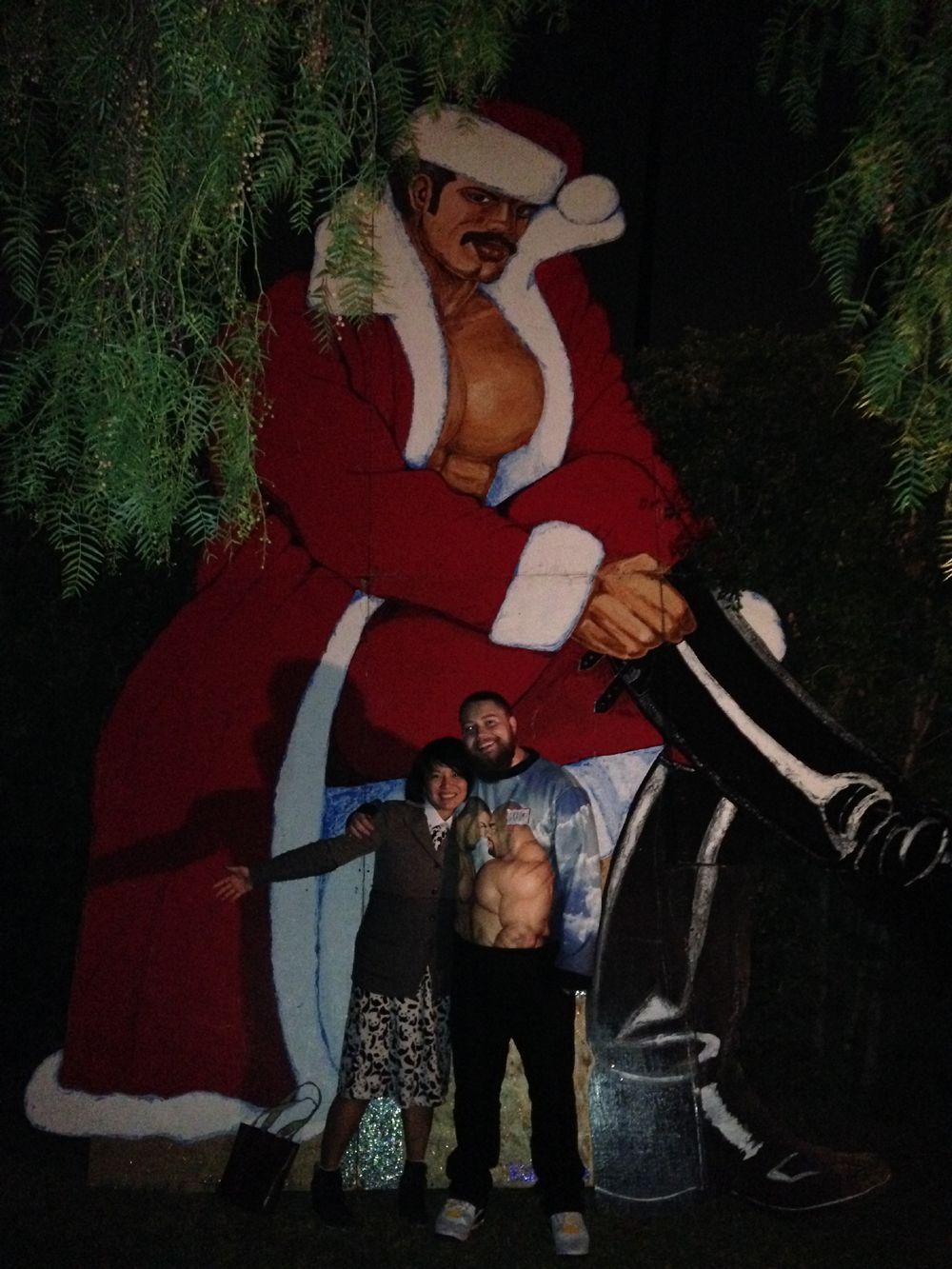Next fall, Fantagraphics will publish Massive: Gay Erotic Manga and the Men Who Make It, featuring stories by an array of well known Japanese manga creators, many of whom have never been published in English before.
Massive was originally slated to be published by PictureBox, but the company closed its doors at the end of 2013 and Fantagraphics acquired the book as part of its queer comics line. Translators Anne Ishii and Graham Kolbeins and designer Chip Kidd will remain on the book at its new home; the three also worked on The Passion of Gengoroh Tagame, a collection of gay manga that PictureBox published last year to great acclaim.
The creators whose work is represented in the book are Gengoroh Tagame, Jiraiya, Seizoh Ebisubashi, Kazuhide Ichikawa, Gai Mizuki, Takeshi Matsu, Fumi Miyabi, and Kumada Poohsuke.
We talked to Ishii and Kolbeins about their work and the gay manga genre in Japan and the United States.
Brigid Alverson: First of all, because I know this book will be new to a lot of our readers, what can we expect in terms of content? Is it mostly short stories? How many creators are involved? What is the level of explicitness? And what sort of extras will we see?
Anne Ishii: The short of it is, a diverse survey introduction to gay Japanese manga and the men who make it. It will be an introduction, specifically, to approximately 10 artists, with interviews, photos and samples of their manga and illustrations, including one original short story by Jiraiya; his first original work for the English reader! The explicitness will range from the level of a Dilbert comic strip to “Honey, hide the children.”
Graham Kolbeins: Massive is an introduction to some of the most talented gay men making manga for a gay male audience today. Our goal from the beginning was to not only adapt these artists’ works into English, but to really familiarize the reader with each mangaka as an individual.
In terms of explicitness, sex is an integral part of the industry that produces gay manga. “It’s what sells magazines,” Inu Yoshi told us in his interview, “and the magazines say it has to have that.” Some of the artists in Massive see pornography as central to their artistic practice, while others prefer to eschew the erotic in their doujinshi (self-published comics).
The Passion of Gengoroh Tagame is the immediate predecessor to this book. What did you learn from working on that, and what has the reaction been so far?
Ishii: What I learned foremost from working on The Passion is that the readership is not a given. We found that a lot of non-queer people outside of the bondage scene were quite taken with the work. Though of course Tagame has a very unique set of narratives that appeal to thematics wholly outside the realm of sexuality, and that too, was an interesting takeaway — that erotica can indeed be consumed as something beyond mere pornography. Not that there’s anything wrong with pornography, Brigid. As a translator, I learned that sound effects aren’t as obvious as “squish squish” “spurt spurt.”
Kolbeins: The reaction to The Passion has been incredible! When Gengoroh came to Toronto and New York last May to promote The Passion, it was inspiring to witness the droves of devoted fans who came out to meet him. It quickly became clear that there’s a huge thirst for this kind of work.
I know this book was originally supposed to be published by PictureBox, and Fantagraphics took it over. How long have you been involved with this project?
Ishii: Dan [Nadel] and we had been working on Massive for as long as we’d been working on The Passion, actually. We’d gone as far as announcing the title and continued developing content with plans to publish in time for TCAF [Toronto Comic Arts Festival] 2014, but of course we knew from early Fall that we needed to find ourselves a new home. I can’t stress enough how supportive Dan has been and will continue to be in our production; how seamless and natural it was to move this to Fantagraphics, where Eric Reynolds was nothing short of fully accommodating of our circumstances. We took things slowly, with respect to the loss of Kim Thompson, but the Massive operation has been at full steam in the ramparts since we launched The Passion and our own line of gay manga-related products, Massive, in May.
Kolbeins: Anne and I went to Japan on our initial research trip in September 2012, at which point we were working on both The Passion of Gengoroh Tagame and Massive. It’s sad that PictureBox is over, especially since Dan Nadel took a risk on this type of manga when no one else was publishing here. But we’re beyond thrilled to join the Fantagraphics family!
This type of gay manga is still pretty new to U.S. readers. Can you give us an idea of the niche it occupies in Japan: How popular is it, how long has it been around, how is it distributed (serially in magazines?) and who is the predominant readership?
Kolbeins: Japan has a rich cultural history of male-male sexuality, going back to shunga woodblock prints in the Edo period and books like Saikaku’s 1687 classic, The Great Mirror of Male Love. Contemporary gay art in Japan can be traced to the hentai zasshi (perverse magazines) of the immediate post-war period, like Fuzokukitan, which provided an all-purpose smorgasbord of straight, gay, lesbian and BDSM erotica.
Barazoku, the first mass market magazine specifically for gay men, debuted in 1971 and began printing gay manga by the mid-70s. The Japanese “gay boom” of the '80s brought more magazines and more manga, but it wasn’t until the early 90s that gay manga took off as a genre, when Gengoroh Tagame became the first gay mangaka to make a profit from a standalone book.
Ishii: The readership today is pretty heterogenous. While Tagame has a wide audience that he estimates is now half women, for example, Jiraiya suggests his work is read primarily by gay men. Meanwhile we have Kumada Poohsuke, who does yonkoma (4-frame) gag manga, and is active in the drag community, and we have others who dabble in BL. What our artists do have in common, however, is participation in an overarching community of men who draw for men.
Also, because the press release touches on this, is it correct to call this bara manga? What does that word mean in Japan and in other countries?
Ishii: Bara is “rose” in Japanese, and not unlike the American use of “pansy.” It’s not a term our artists use to refer to themselves or their artwork. Some say it’s only a term straight people use to describe them. In fact, the response to the term when we interviewed each of our artists, was unanimous confusion/distaste. However, I believe it’s a relatively harmless linguistic “false friend” (like “fanny” or “pissed” in British versus American English). Obviously, Westerners have used the word not to denigrate gays but merely to distinguish this genre of gay manga from yaoi or BL. We use the word very sparingly and are hoping eventually when asked, “what the heck is this?” that “gay manga” will suffice as an answer.
Kolbeins: The etymology of “bara” is a source of endless fascination. It was originally a pejorative for gay men, but in the 1960s and 1970s, Japanese gay culture boldly reappropriated the term (in the title of Barazoku, for instance). By the 1990s, however, “bara” had fallen out of use and lost relevance within the gay community. That’s when the term took on a life of its own online. Tagame blames clueless heterosexual administrators in the early days of the Internet who used “bara” to label the gay forums, leading foreigners to believe it was a term for the artwork posted within. The ways Internet communities use “bara” today are even more muddled, expanding to describe “manly” gay artwork in general or refer to the bigger body types frequently found in gay manga. Personally, I used to use the term freely until we went to Japan and Tagame explained that “it’s a very negative word that comes with bad connotations.”
Are there particular conventions — types of stories, types of characters — that are common to this genre?
Ishii: That’s a great question. I have found, personally, that our artists are more diverse in narrative than any category of manga I’ve seen before, but I believe it’s because it’s niche that it has an allowance for such creative freedom. All our artists use pseudonyms and don’t have to worry about meeting arbitrary marketing goals set by publishers. I mean, artists have told us individually that some things work better than others. For example, corpulence is big (hahaha just caught my own play on words). Penetration is a bottom line (OMG, I’m a pun machine). I think this is also why this type of manga is sometimes considered “bear porn,” but I’m told “bear” is another contentious term.
Kolbeins: “Bear” is English gay slang for a gay dude who’s both fat and hairy. The more common slang for bigger gay men in Japan are gachimuchi (essentially “muscle-voluptuous”) and gachidebu (“muscle-fat”), words that don’t necessarily hinge on the presence of body/facial hair the way “bear” does. Nomenclature aside, most of the artists in Massive, unsurprisingly, depict men with larger body types, from Takeshi Matsu’s well-defined musclemen to Seizoh Ebisubashi’s generously bellied fatties.
Do you think this book will be accessible to readers who aren¹t used to manga? Would it be of interest to readers of genre manga (shonen, shoujo, yaoi) as well?
Ishii: I know I’m supposed to say this, which is precisely why I shouldn’t say it to you, but this is a book for everyone. Our introductions and blurbs are from non-manga creatives. And as you know, there’s a fast-growing market for gay manga in women. I wouldn’t exclude shonen/shoujo/yaoi readers from this whatsoever. BUT but but… I think just as with sexuality in general, these categories are a bit of a self-perpetuated obstacle. I mean, I’m not suggesting we create the manga equivalent of that LL Cool J-Brad Paisley nuclear bomb “Accidental Racist” by Frankenstein-ing “One Piece” with Tagame’s “Man-Cunt” but these artists would tell you themselves — the 21st century has been very good to the erotic manga community’s solidarity.
Kolbeins: Everyone who can get down with sequential art and queerness should read this book!



